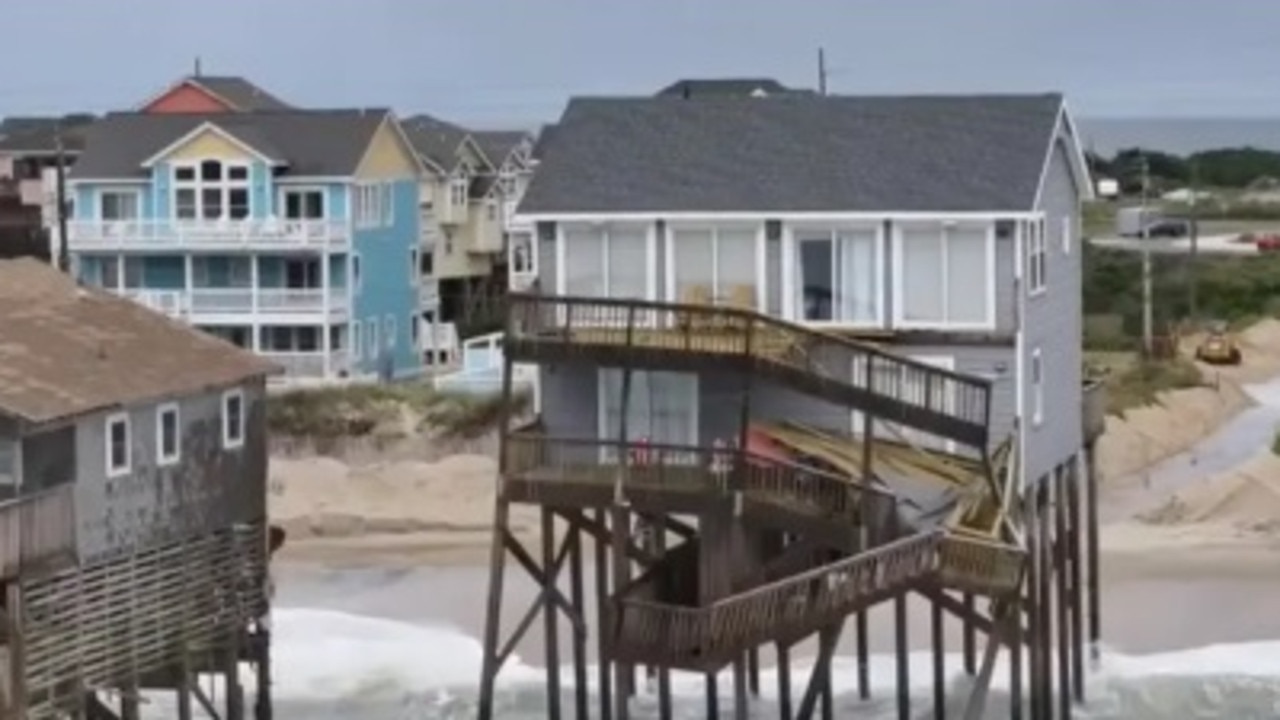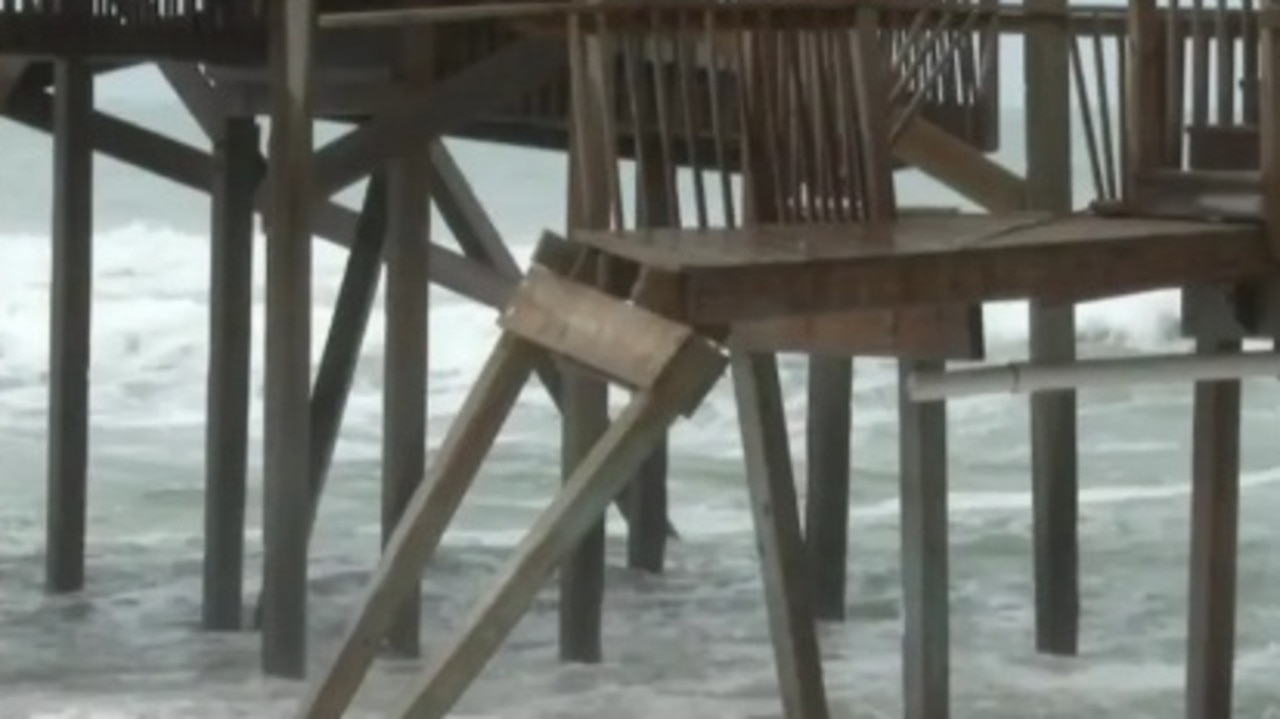Oceanfront houses on the brink of collapse
Stunning drone footage shows vulnerable oceanfront houses on the brink of collapsing into the sea.

Stunning drone footage shows vulnerable oceanfront houses in North Carolina that dot the Outer Banks on the brink of collapsing into the sea.
Footage filmed by local TV station WRAL News, shows a cluster of homes in Rodanthe that the water seems particularly intent on claiming.
The banks have already foreclosed on some of the houses, which once stood about 90 metres away from the rising surf, one homeowner said.
“So many people say hateful things [and] ask why we built our house in the middle of the ocean,” said Sharon Troy, whose family has owned one of the homes for 16 years.
“It was not like this when we bought it,” she said of her house, which is near a pile of sand.
“There was a football field of beach behind these houses. ”Not anymore.

Now it stands in the path of waves with a group of other homes after years of beach erosion and high winds as sea levels rise.
The waves splash wildly against the wooden footings of the houses — even at low tide, the station said.
And their septic tanks have cracked open, spilling sewage into the water.

“It wasn’t like this just a few years ago. And, we aren’t rich people. We are hard-working normal people. We can’t afford to move it,” she said.
“There is nowhere to move it,” Troy continued. “The insurance company won’t pay out until it falls over.”
The troubling scene has played out time and again along the Outer Banks, a 320km string of barrier islands off North Carolina and Virginia.
Last month, another house in Rodanthe collapsed into the sea in a caught-on-camera disaster — and it was the seventh house to be carried away by rising tides in just the last four years.


David and Teresa Kern of Hershey, Pennsylvania, had bought the four-bedroom, two-bathroom vacation home in 2019 for $US339,000 – $A495,000.
The destruction left the couple scrambling to salvage what they could of their finances.
“That’s what happens for all these houses,” Dare County Manager Bobby Outten told The Post at the time.

“Eventually, when the ocean erodes enough of the beach, then it takes the foundation out from under the house,” he continued.
“As it lost beach, it lost the sand under its pilings and eventually the house just collapsed.”
Mark Gray, of WM Dunn Construction, told WRAL that his company has been contracted to clean up debris from at least five of the homes in the last few years.
“When it’s rough like this, like when the last one went in, we had to clean 11 miles (17km) of beach,” Gray told the station. “It’s a mess.”
Another beachfront home has fallen into the Atlantic Ocean on North Carolina’s Outer Bankshttps://t.co/1TIlOEi4iipic.twitter.com/3e6ukcTtQ2
— philip lewis (@Phil_Lewis_) August 17, 2024
The waves do their damage quickly — Gray said that between Monday and Tuesday last week, the ocean swallowed up another few feet of sand.
“It’s changed the whole dynamics of this thing,” the contractor said.
“We’re bringing more equipment down to get ready for the potential collapse of the house,” he added. “Everything’s changed now. If the house falls, there’s no beach to get on to clean it up, so I don’t know what we’re going to do.”
“It’s a really unfortunate situation because that debris can scatter long distances across the seashore,” Cape Hatteras National Seashore Superintendent Dave Hallac told the station.
Climate change is further exacerbating the natural erosion that shifts the sands of the ever-changing barrier islands, Hallac said. And that puts more and more buildings at risk.
“When you add a foot of water or 2 feet of water, that just makes everything worse,” Hallac said.
Meanwhile, saltwater floods the neighborhood’s sandy, barely-paved streets, reminding the 200 or so residents left that their little beach community is on the clock.
“It’s incredibly sad,” Troy, the homeowner, said. “All we can do is hope and pray.”
This article originally appeared on the New York Post and was reproduced with permission





